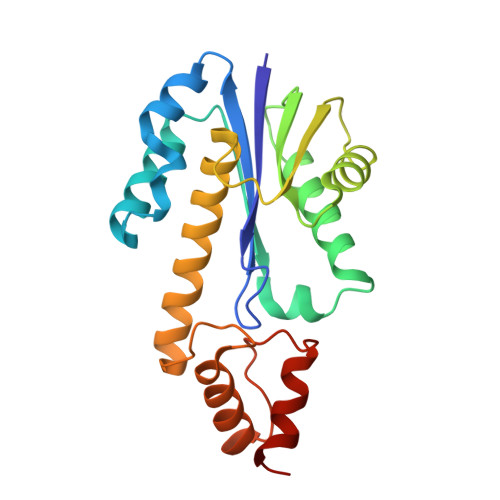Conformational contagion in a protein: Structural properties of a chameleon sequence
Takano, K., Katagiri, Y., Mukaiyama, A., Chon, H., Matsumura, H., Koga, Y., Kanaya, S.(2007) Proteins 68: 617-625
- PubMed: 17510955
- DOI: https://doi.org/10.1002/prot.21451
- Primary Citation of Related Structures:
2DF5, 2DFE, 2DFF, 2DFH, 2DFI - PubMed Abstract:
Certain sequences, known as chameleon sequences, take both alpha- and beta-conformations in natural proteins. We demonstrate that a wild chameleon sequence fused to the C-terminal alpha-helix or beta-sheet in foreign stable proteins from hyperthermophiles forms the same conformation as the host secondary structure. However, no secondary structural formation is observed when the sequence is attached to the outside of the secondary structure. These results indicate that this sequence inherently possesses an ability to make either alpha- or beta-conformation, depending on the sequentially neighboring secondary structure if little other nonlocal interaction occurs. Thus, chameleon sequences take on a satellite state through contagion by the power of a secondary structure. We propose this "conformational contagion" as a new nonlocal determinant factor in protein structure and misfolding related to protein conformational diseases.
- Department of Material and Life Science, Osaka University, Suita, Japan. ktakano@mls.eng.osaka-u.ac.jp
Organizational Affiliation:
















